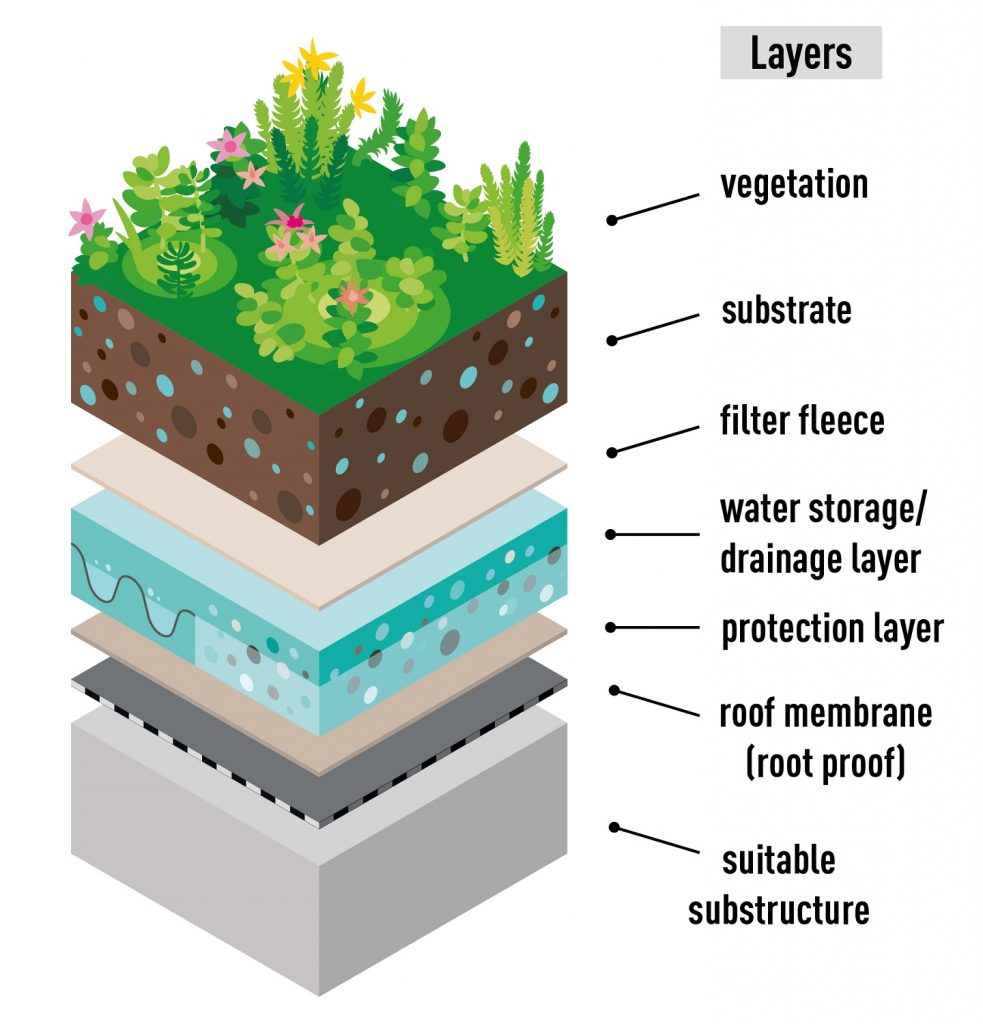Green is not just beautiful

Cities all over the world are going green to adapt to climate change and to preserve wildlife. On June 6th World Green Roof Day celebrates green roofs and their many benefits for people and nature.
Have you ever walked around your city and found yourself admiring a building covered in beautiful, lush vegetation? Once rare to spot, nowadays green buildings are more and more popular. They are not only beautiful to stare at, but they have lots of positive effects that extend beyond the building to the whole neighbourhood.
The perks of green buildings and cities
First, green surfaces reduce temperatures. Vegetation retains rainwater and releases it back in the atmosphere in a controlled way through a process called evapotranspiration. It’s like a natural air conditioning system, that lowers the heat caused by concrete in cities.
Through the absorption of water, green roofs help decrease the risk of floods. One square metre of a green roof with 25 cm substrate can absorb the water contained in a bathtub. This takes the pressure off the sewerage system. Moreover, some green buildings can also filter and clean water.
Green areas increase biodiversity, providing habitats for plants, animals, and insects. For example, birds can use green roofs as nesting places, while bees can feed on the pollen of flowers.
Humans can benefit from green roofs too, as they have a positive impact on people’s health and wellbeing. Plants reduce stress, increase the immune system helping us recover quicker from illnesses and can even enhance our productivity and concentration.
Those who have the chance of living in a green building might have noticed that vegetation contributes to making homes more comfortable. It reduces noises and air pollution and increases thermal insulation, creating a nice and cosy environment.



Which kind of green roof is best for me?
Green roofs consist of at least four layers: vegetation, substrate, filter, and drainage. Depending on the substrate height, green roofs can be divided in two different types: extensive or intensive.
Extensive green roofs have a thinner layer of substrate and weight less. This kind of green roof is usually populated with low-growing plant species such as succulents, moss, herbs, and grass, that require low maintenance and can be combined with photovoltaics panels. Extensive green roofs also provide a good habitat for plants and animals, because they are not accessible to people.
Intensive roofs on the contrary, have a deeper substrate layer and therefore need a good structure capacity. They require higher maintenance because the vegetation (ornamental lawns or shrubs, bushes, and trees) needs more care and water.






Towards prefabrication
The INFINITE project, coordinated by Eurac Research, is looking for ways to optimise building greening in terms of prefabrication to lower costs and help spread the use of green roofs. To do so, we will focus on modular green roofs, a special form of extensive green roof made of pre-grown vegetation mats or pre-grown modules where all layers are combined into one cassette. The research on the green kit is led by the holistic competence centre for greening buildings GRÜNSTATTGRAU.
Due to their multiple benefits, green roofs are one of the most effective solutions to make cities more resilient to climate change. To make them more sustainable, INFINITE will study irrigating methods and techniques that use rainwater and grey water (wastewater coming from showers, sinks, washing machines).

“In order to design healthy, livable cities of the future, we have to rethink our planning.” said Isabel Mühlbauer from GRÜNSTATTGRAU. “While it is rather easy to implement green spaces into new buildings, it can be a challenge for the existing building stock. Within INFINITE, we want to tackle this issue and show how to implement green roofs within the renovation process.”
All photos in this article are courtesy of GRÜNSTATTGRAU
RELATED NEWS
Webinar on green prefabricated facades for retrofit
Green prefabricated facades in the webinar from the European Federation of Green Roof and Living Wall Associations
INFINITE at BauZ! Congress in Vienna
Presentation of mock-up results with focus on green kit and BIM platform introduction.
Prefabricated Nature Based Solutions
What are the advantages of green walls and green façades on buildings and residents’ life?